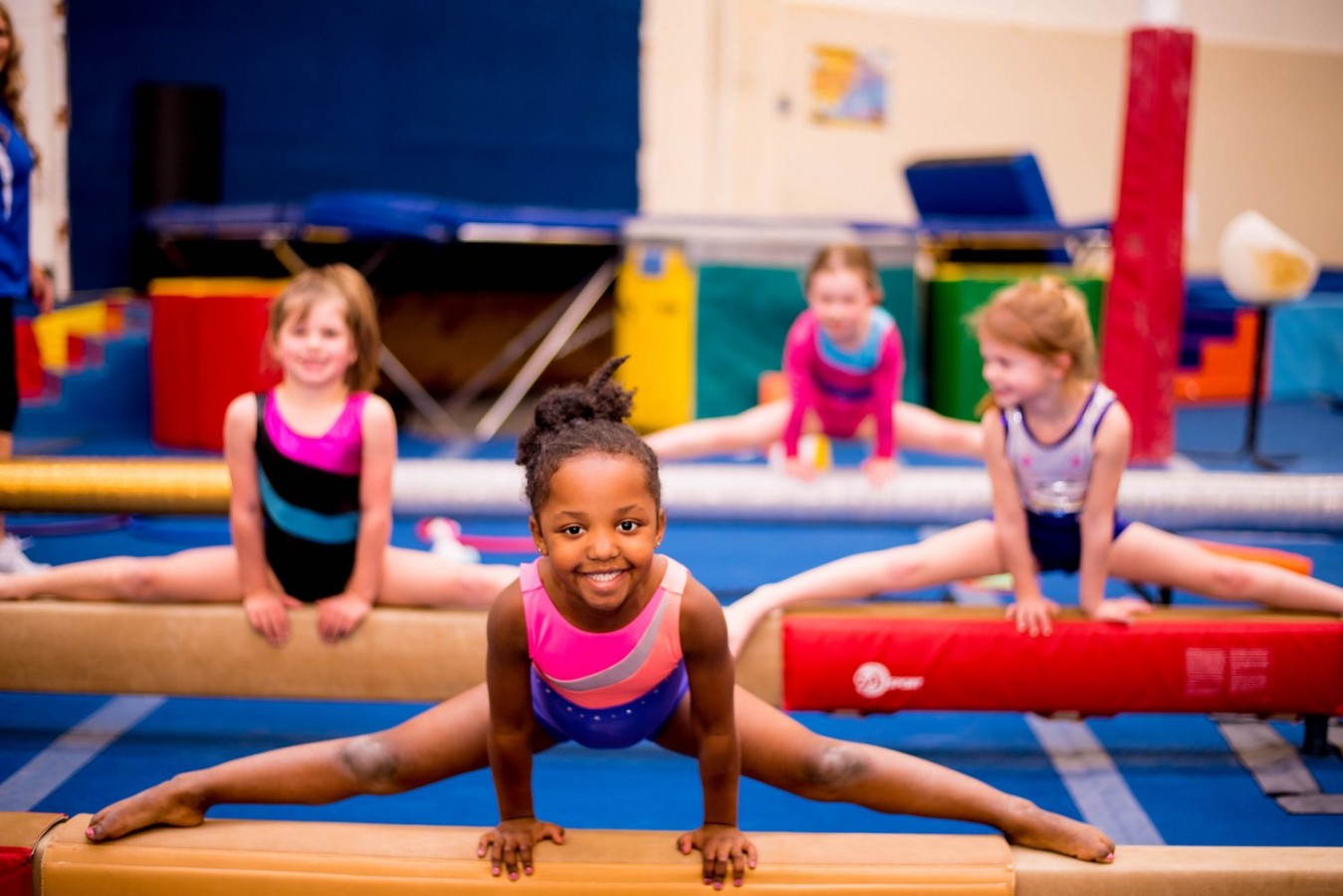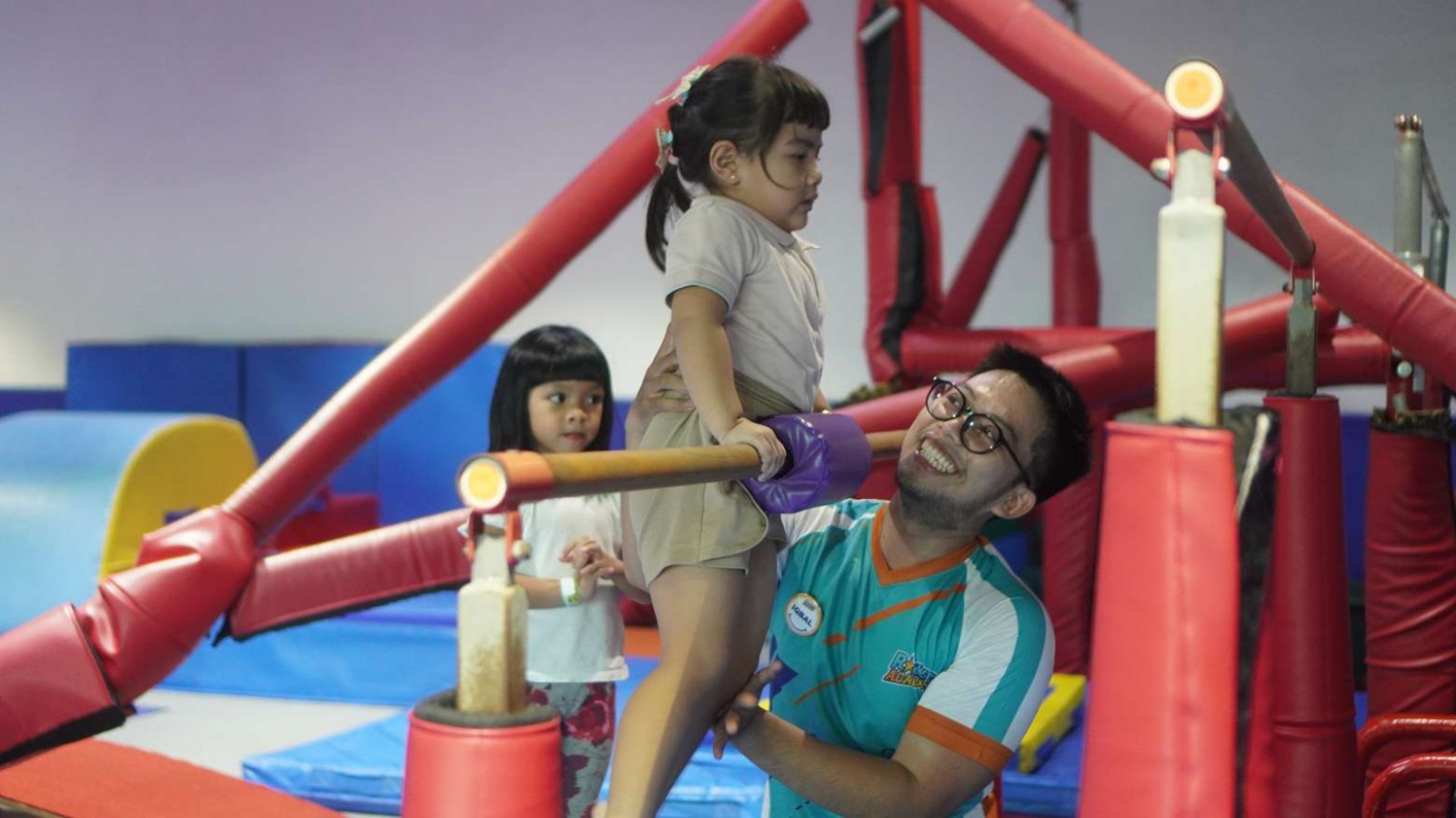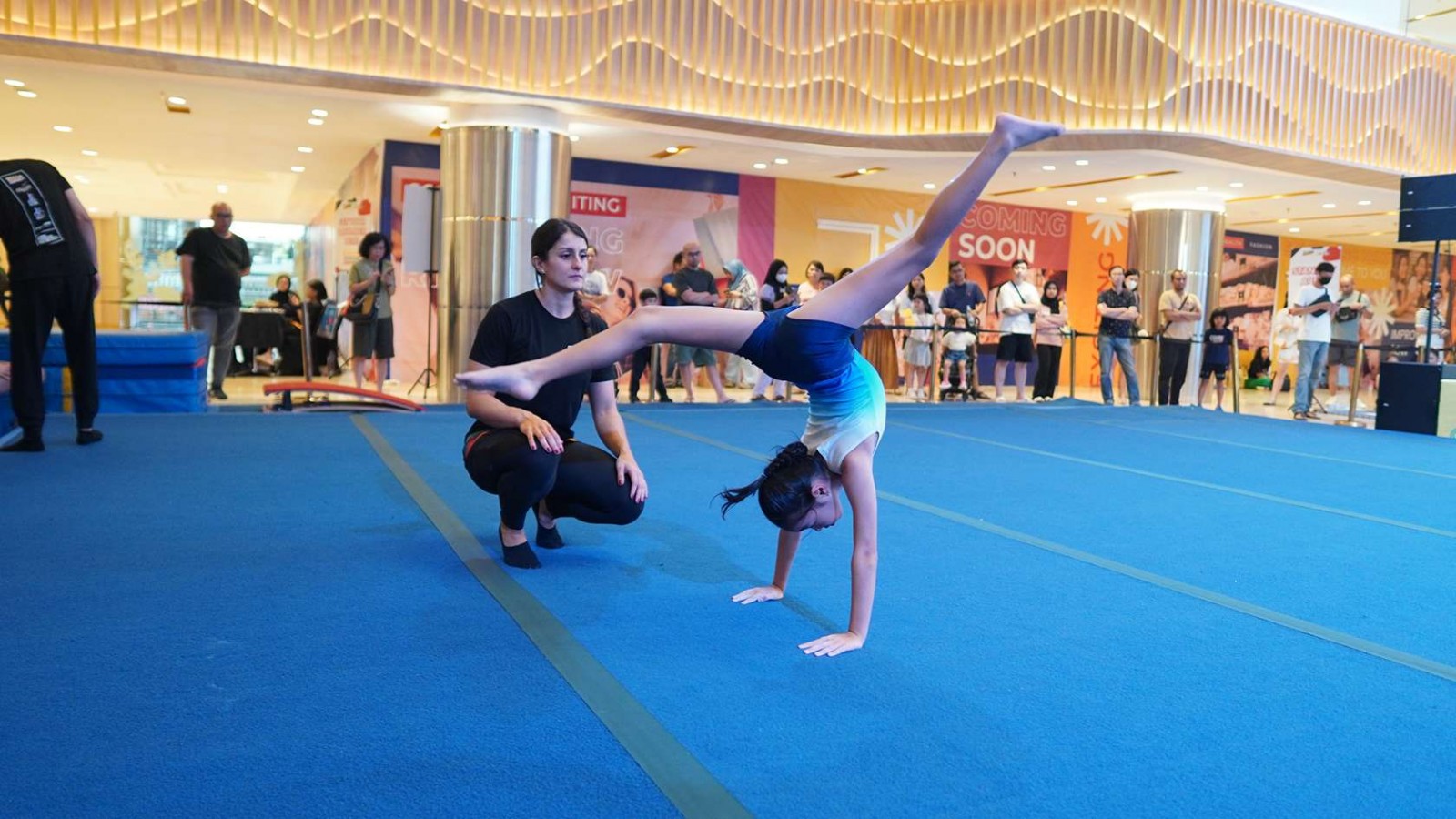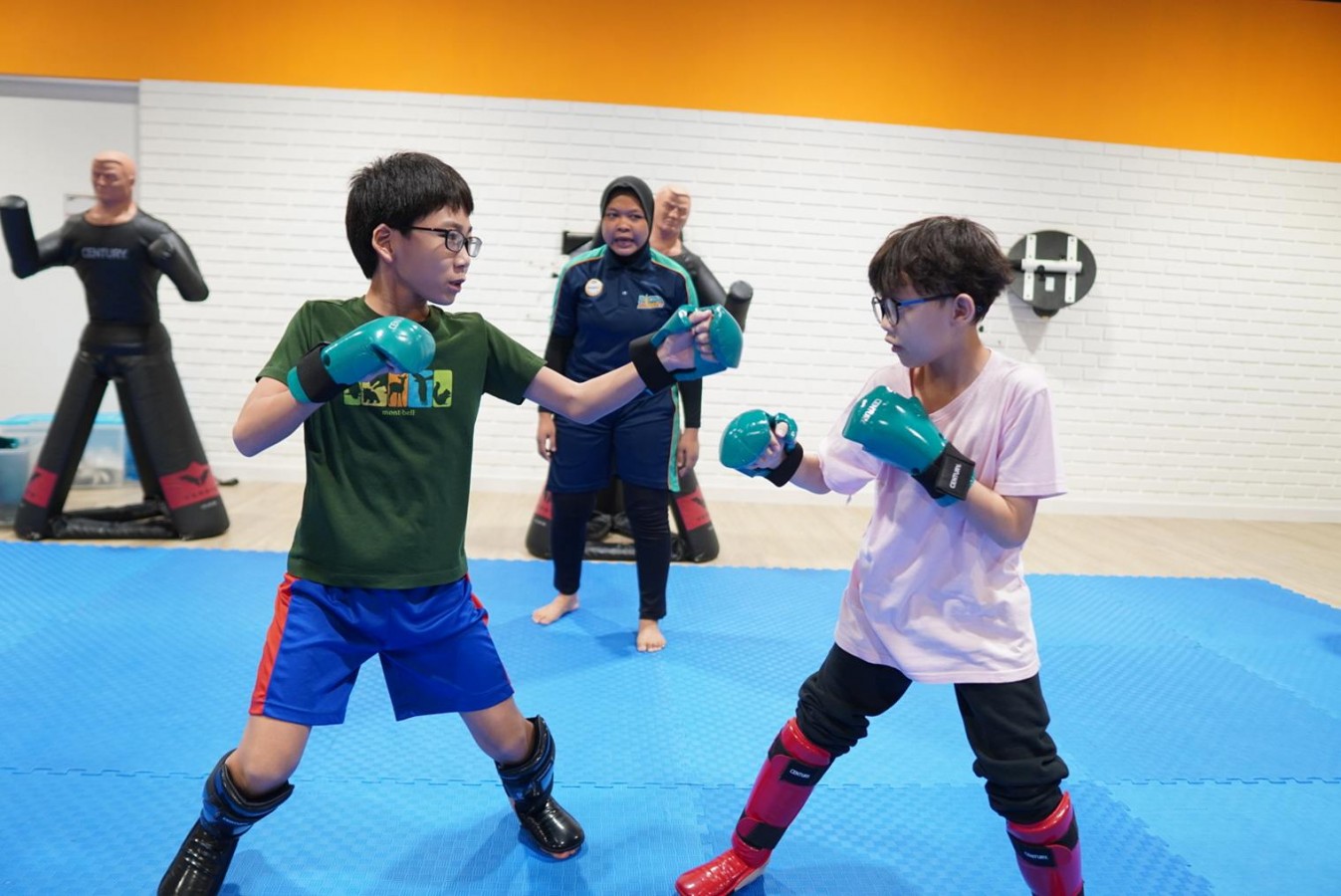Recreational Gymnastics: Definition, Benefits, and More

Gymnastics has captured the fascination of many across the globe. While competitive gymnastics often takes the spotlight with its awe-inspiring routines and Olympic aspirations, recreational gymnastics offers a unique avenue for individuals of all ages and skill levels to experience the joy and benefits of this dynamic sport.
In this comprehensive guide, we explore the essence of recreational gymnastics, its benefits, what is typically taught in recreational gymnastics classes, and the distinctions between recreational and competitive gymnastics.
What is Recreational Gymnastics?
Recreational gymnastics provides a non-competitive and inclusive environment where participants engage in gymnastics-based activities for enjoyment, fitness, and skill development.
Unlike competitive gymnastics, which focuses on achieving high-level skills for performance and competition, recreational gymnastics emphasizes learning fundamental movements, developing coordination, building strength, and enhancing flexibility in a supportive atmosphere.
Recreational gymnastics classes are designed to cater to various age groups and skill levels, offering a wide range of activities and exercises tailored to individual needs and abilities.
These classes typically include basic tumbling, balance beam routines, vaulting, bar exercises, and floor exercises, among others, providing participants with a well-rounded introduction to the sport of gymnastics.
Benefits of Recreational Gymnastics
Participating in recreational gymnastics offers numerous physical, mental, and social benefits for individuals of all ages. Here are some of the key advantages:
1. Physical Fitness
Recreational gymnastics promotes overall physical fitness by improving strength, flexibility, agility, and coordination. Participants engage in a variety of bodyweight exercises and movements that target different muscle groups which helps to enhance cardiovascular health and muscle tone.
2. Skill Development
Recreational gymnastics classes focus on developing fundamental movement patterns and skills, laying the foundation for more advanced gymnastics techniques. Participants learn proper body alignment, balance, and spatial awareness, which are essential for mastering gymnastics elements and progressing in the sport.
3. Confidence and Self-Esteem
As participants gain proficiency in various gymnastics skills and overcome challenges, they develop a sense of accomplishment and self-confidence. Recreational gymnastics fosters a supportive and encouraging environment where individuals feel empowered to explore their potential and take on new challenges with confidence.
4. Social Interaction
Recreational gymnastics classes provide opportunities for social interaction and teamwork, allowing participants to form friendships and bond over shared experiences. Through group activities and collaborative exercises, individuals learn valuable communication skills, cooperation, and sportsmanship.
5. Stress Relief and Mental Well-being
A 2021 Study mentioned that engaging in physical activity, such as recreational gymnastics, can help reduce stress, improve mood, and enhance overall mental well-being.
The rhythmic movements and focus required in gymnastics can promote relaxation and mindfulness, providing a welcome respite from the demands of everyday life.
What is Taught in Recreational Gymnastics Classes?
Recreational gymnastics classes offer a diverse curriculum that introduces participants to a wide range of gymnastics skills and techniques. Depending on the age and skill level of the participants, classes may include the following components:
A. Warm-Up and Stretching
Classes typically begin with a warm-up session to prepare the body for physical activity and prevent injury. Participants engage in dynamic stretches and exercises to increase flexibility and mobility.
B. Basic Tumbling Skills
Tumbling skills form the foundation of gymnastics and are often taught in recreational classes. Participants learn basic movements such as forward rolls, backward rolls, cartwheels, handstands, and somersaults, gradually progressing to more advanced skills as they gain confidence and proficiency.
C. Apparatus Work
Recreational gymnastics classes may incorporate training on various gymnastics apparatus, including the balance beam, vault, uneven bars, p-bars, and tumbling. Participants learn basic techniques and routines specific to each apparatus, focusing on balance, strength, and coordination.
D. Strength and Conditioning
Strength and conditioning exercises are integral components of recreational gymnastics training. A study also mentioned tha participants engage in bodyweight exercises, conditioning drills, and core-strengthening activities to improve overall fitness and athletic performance.
E. Games and Challenges
To keep classes engaging and enjoyable, instructors often incorporate games, challenges, and group activities that reinforce gymnastics skills and promote teamwork and camaraderie among participants.
Differences Between Recreational and Competitive Gymnastics
While recreational and competitive gymnastics share some similarities, there are several key differences that distinguish the two:
1. Competitive Focus
Competitive gymnastics is primarily focused on preparing athletes for competition at various levels, including local, regional, national, and international events. Participants train intensively to master advanced skills and routines in pursuit of competitive success.
2. Training Intensity and Commitment
Competitive gymnastics requires a higher level of commitment, time, and dedication compared to recreational gymnastics. Athletes in competitive programs often train several hours per day, year-round, under the guidance of experienced coaches.
3. Performance Expectations
In competitive gymnastics, athletes are judged based on the difficulty, execution, and artistry of their routines, with scores determining their placement in competitions.
Recreational gymnastics, on the other hand, places less emphasis on competition and performance standards, allowing participants to focus on skill development and enjoyment.
4. Pressure and Stress Levels
The competitive nature of competitive gymnastics can lead to higher levels of pressure and stress among athletes, as they strive to meet rigorous training demands and performance expectations.
Recreational gymnastics offers a more relaxed and supportive environment, where participants can explore the sport at their own pace without the pressure of competition.
Enroll Your Children to Gymnastics Program Today!
Recreational gymnastics offers a fun, inclusive, and rewarding experience for individuals seeking to explore the beauty and athleticism of gymnastics in a non-competitive setting.
If your children are intrigued by the world of gymnastics, enrolling them in a gymnastics program can be an excellent way to nurture their skills and passion for the sport. Consider Rockstar Academy, renowned for its exceptional Sports & Performing Arts programs, including gymnastics.
Here, your children will embark on a journey of physical and personal growth, honing their strength, flexibility, and coordination in a secure environment. With a focus on beams, bars, tumbling, and vaulting, they'll develop a solid foundation while building confidence and achieving milestones.
The academy offers opportunities for testing and competitions, such as Gymnastics Testing and Gymnastics Elite Championships, fostering a culture of excellence, sportsmanship, and resilience.
To explore the exciting world of gymnastics, take advantage of the free trial class offered by Rockstar Academy. Contact us today and let your child's gymnastics journey begin!
FAQs
At what age can children start recreational gymnastics?
Recreational gymnastics programs are typically available for children as young as preschool age (3-4 years old) up to adults of all ages. Many gymnastics facilities offer age-appropriate classes and instruction tailored to different developmental stages.
Do I need prior gymnastics experience to participate in recreational classes?
No prior gymnastics experience is required to participate in recreational gymnastics classes. Classes are designed to accommodate individuals of all skill levels, from beginners to those with previous gymnastics experience.
What should I wear to a recreational gymnastics class?
Participants should wear comfortable athletic attire that allows for ease of movement, such as leotards, leggings, shorts, or T-shirts. Avoid wearing jewelry or accessories that could pose a safety hazard during gymnastics activities.
Is recreational gymnastics only for children, or can adults participate as well?
Recreational gymnastics programs welcome participants of all ages, including adults. Many facilities offer adult gymnastics classes specifically tailored to the needs and interests of adult learners.
How often should I attend recreational gymnastics classes?
The frequency of attendance depends on individual preferences and scheduling constraints. Some participants may choose to attend classes once or twice a week, while others may opt for more frequent participation based on their availability and fitness goals.



